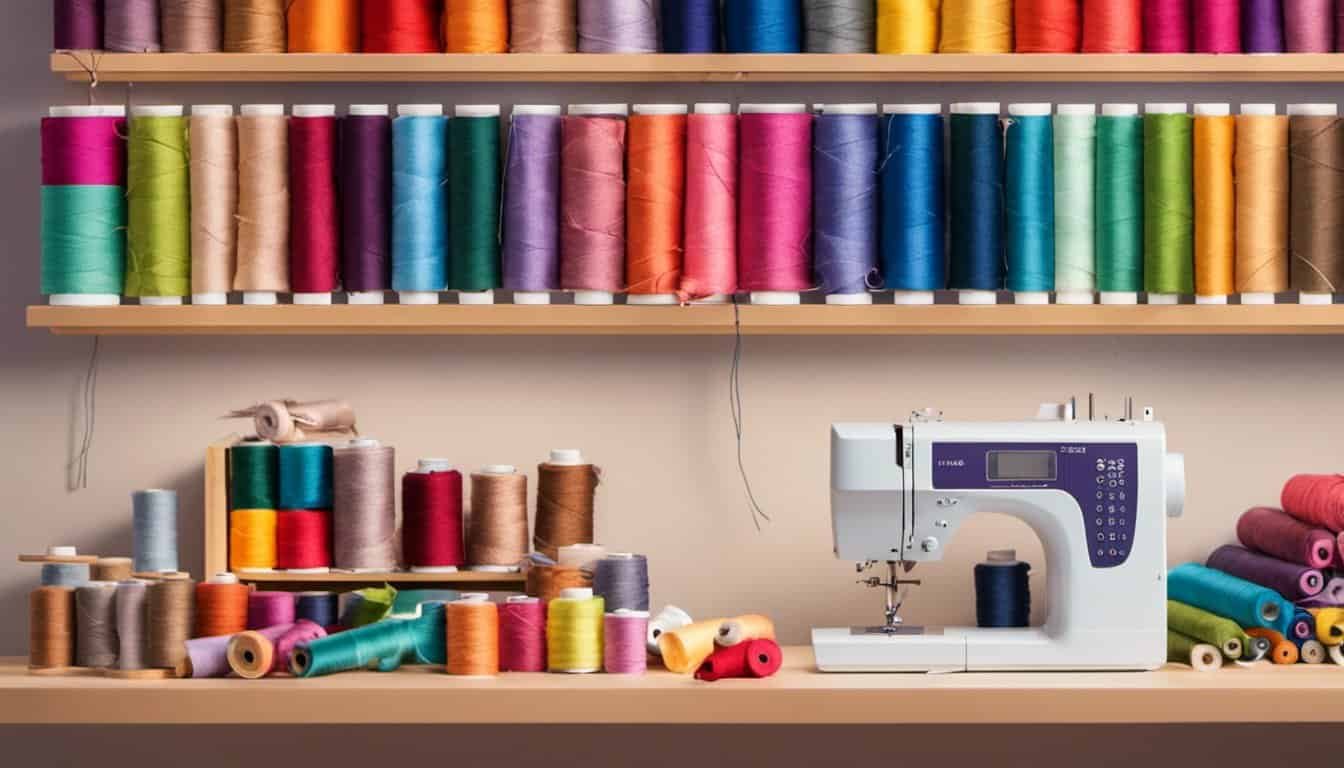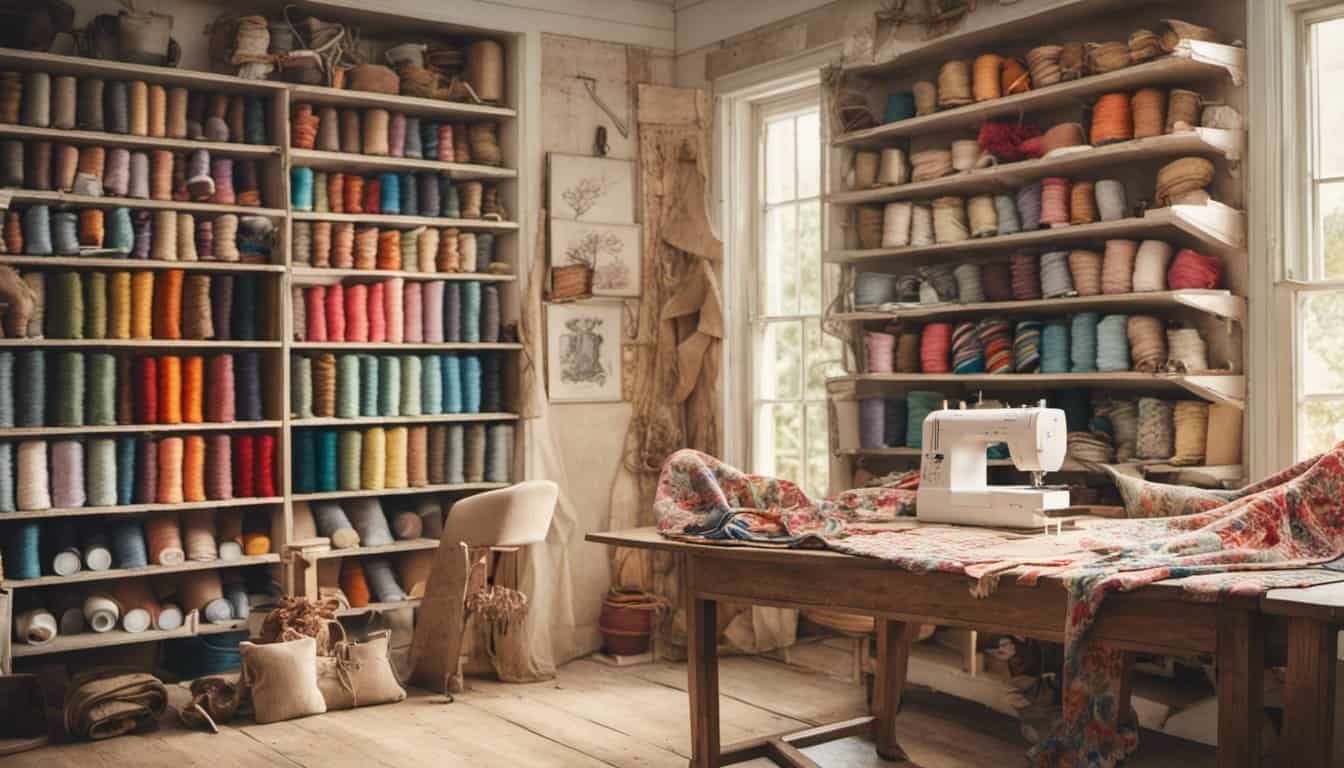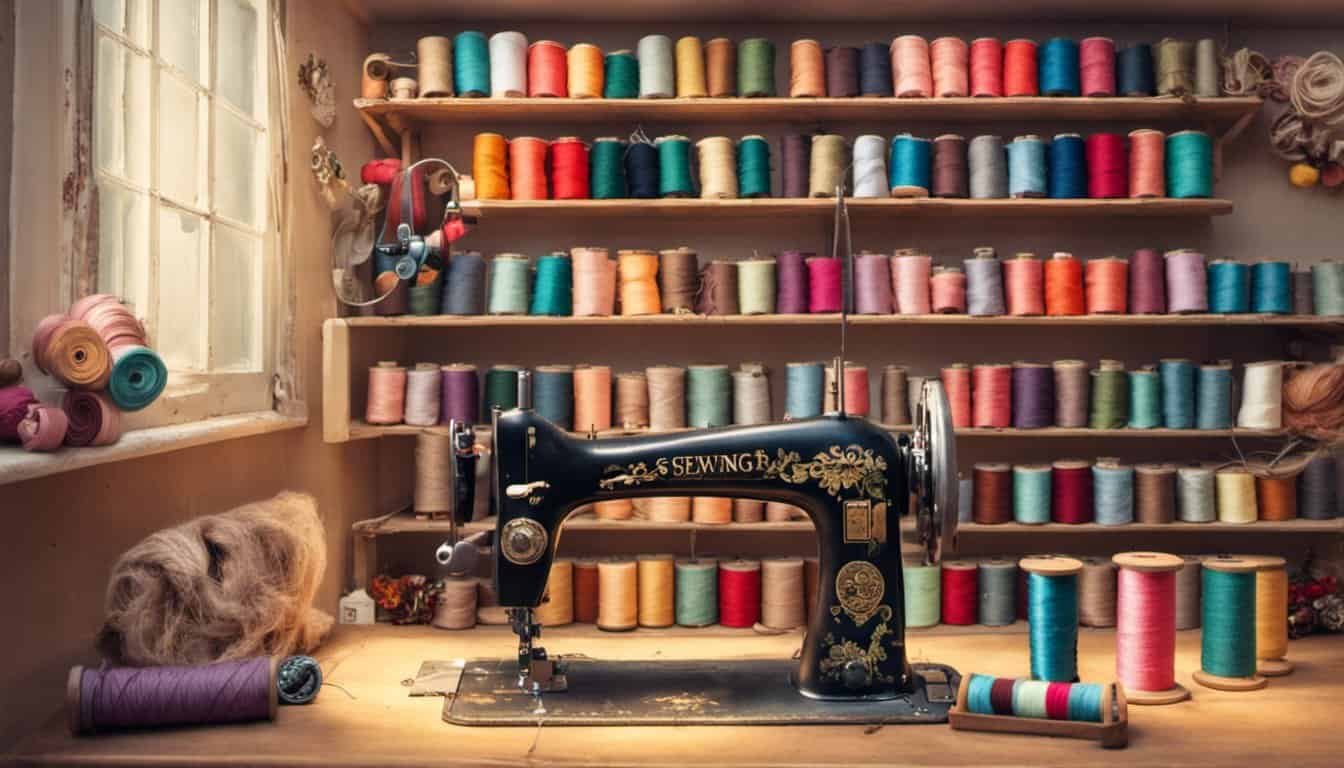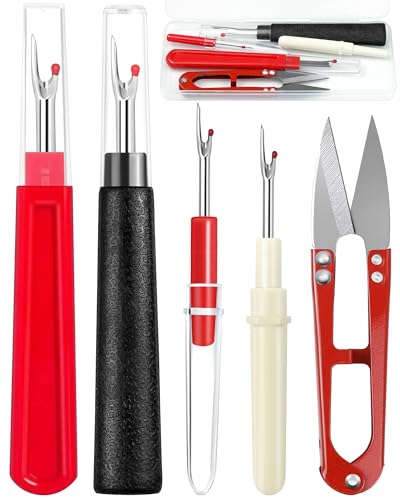Are you new to sewing and wondering what those little pins are for? Well, you’ve come to the right place! Sewing pins are an essential tool in any sewing kit, and they serve a variety of purposes. From holding fabric pieces together to marking patterns and ensuring precise seams, these tiny pins play a big role in creating beautiful and professional-looking garments. In this article, we’ll explore the different uses of sewing pins and how they can make your sewing projects easier and more successful.
Have you ever wondered how seamstresses and tailors achieve those perfectly aligned seams? The secret lies in sewing pins! These tiny, sharp tools are used to hold fabric layers together, ensuring they stay in place while you sew. Whether you’re working with delicate silk or sturdy denim, sewing pins are your best friend when it comes to keeping your fabric pieces aligned and preventing them from shifting. So, next time you’re tackling a sewing project, don’t forget to grab your trusty pins and secure your fabric for a flawless finish.
In addition to holding fabric in place, sewing pins also have another important role in the sewing process: pattern marking. When you’re working with a pattern, you need to transfer markings onto your fabric to ensure accurate cutting and sewing. Sewing pins can be used to mark darts, pleats, notches, and other important details on your fabric. By placing pins in specific locations, you can easily reference these markings as you sew, resulting in a well-finished garment that matches the pattern perfectly. So, if you’re planning to tackle a patterned project, make sure to have your sewing pins handy for precise marking.
Definition of Sewing Pins
When it comes to sewing, embroidery, knitting, or any other craft project, sewing pins are a must-have tool in your arsenal. These tiny, versatile wonders are used for a multitude of purposes and can make a big difference in the quality and precision of your work. Let’s delve into the definition of sewing pins and explore their various uses.
Securing Fabric in Place
One of the primary functions of sewing pins is to hold fabric layers together while you sew them. Whether you’re making an elegant dress, a cozy quilt, or a simple tote bag, sewing pins will keep your fabrics from shifting or slipping. This ensures that you achieve neat and even seams, resulting in a professional finish.
Pattern Marking
Accuracy is key when it comes to cutting and sewing patterns. Sewing pins play a crucial role in precisely marking your fabric before you start sewing. By carefully placing pins at specific points on your pattern, you can create guidelines for cutting and ensure that your pieces align perfectly. This, in turn, leads to a well-fitting and polished final product.
Ease of Use
Sewing pins are designed to be user-friendly, making them accessible to both beginners and experienced creators. They typically feature a sharp point at one end and a round head at the other. This simple design allows for effortless insertion and removal without damaging your fabric or pricking your fingers. Additionally, the various lengths available cater to different fabric thicknesses and ensure secure hold.
Versatility
Beyond holding fabric together or marking patterns, sewing pins have a range of other practical uses. You can use them to attach trims, appliques, or pockets, enabling you to experiment and add unique touches to your creations. Sewing pins can even assist in fitting adjustments, allowing you to temporarily alter garment seams before making permanent changes.
Different Types of Sewing Pins
When it comes to sewing pins, there are several different types to choose from. Each type serves a specific purpose and can make your sewing projects easier and more efficient. Here are some of the most commonly used sewing pins:
1. Straight Pins
Straight pins are the most basic and widely used sewing pins. They are typically made of steel with a sharp point on one end and a round head on the other. These pins are perfect for holding fabric layers together during sewing. The sharp point easily penetrates through multiple layers of fabric without causing damage. Straight pins come in different lengths, so you can choose the appropriate size for your project.
2. Ball Head Pins
Ball head pins are similar to straight pins but feature a round plastic ball on the end instead of a traditional head. The ball head makes it easier to grip and maneuver the pins, especially when working with delicate fabrics like silk or satin. These pins are also great for marking patterns or holding trims and other embellishments in place.
3. Glass Head Pins
Glass head pins are a popular choice among sewers who want a high-quality pin with extra durability. These pins have a glass head, which helps prevent melting when exposed to heat during ironing. The glass heads are also heat-resistant, making them ideal for use with pressing tools. Glass head pins come in different lengths and are commonly used for pinning thicker fabrics or quilting projects.
4. T-Pins
T-pins are unique in shape, resembling the letter “T”. These pins have a long, straight body with a flat head that forms the top of the “T”. T-pins are ideal for pinning heavy or bulky fabrics, like upholstery or leather. They provide extra stability and can securely hold thick layers without slipping.
5. Silk Pins
Silk pins, as the name suggests, are specifically designed for use with delicate fabrics. These fine pins have a thin, sharp point that easily slides through delicate fabrics without leaving noticeable holes. Silk pins are a great choice for lightweight fabrics like chiffon, organza, or silk.

Remember, choosing the right sewing pin for your project can make a big difference in the final result. Consider the fabric type, thickness, and any specific requirements when selecting the appropriate pin. By using the right pins, you’ll be able to achieve precise and professional-looking seams, making your sewing projects a success.
How to Use Sewing Pins
When it comes to the art of sewing, having the right tools and techniques is essential for a successful project. Sewing pins are one of those tools that can make a huge difference in achieving precise and professional results. Here, we’ll guide you on how to use sewing pins effectively.
1. Selecting the Right Pins: Before you start, it’s important to choose the right sewing pins for your project. Consider the fabric type, thickness, and any specific requirements. For delicate fabrics like silk or chiffon, silk pins are a great choice as they glide easily through the fabric without leaving marks. For heavier fabrics, T-pins or ball head pins provide extra stability.
2. Pinning Fabric Layers: Sewing pins are primarily used to hold fabric layers together before stitching. To do this, align your fabric pieces and insert the pins perpendicular to the fabric edge, about 1 to 1.5 inches apart. Make sure the pins go through all layers evenly, ensuring they stay in place while you sew.
3. Pattern Marking: Sewing pins are also handy for pattern marking. When cutting out your pattern, pin it to the fabric using straight pins at the key points. This will ensure accuracy and keep the pattern from shifting as you cut. Remove the pins as you go along to prevent any accidental pricking.
« Unveiling the Secrets of Perfect Sewing Construction: Learn to Create Flawless Garments with These Expert Techniques
Discover the Mind-Blowing Differences Between Sewing Street and Sewing Quarter – Which One Reigns Supreme in the Sewing Community? »
4. Securing Seams: When sewing seams, pins can help keep everything aligned. Start by pinning the fabric pieces together along the seam line, with the pins parallel to the edge. This will prevent any shifting or misalignment, resulting in neat and straight seams.
5. Pinning Curved or Slippery Fabrics: Pinning curved or slippery fabrics like satin or jersey can be tricky. In these cases, try using ball head pins or curved safety pins. These pins have a non-slip feature that holds the fabric securely in place without causing damage.
Remember, the key to successful pinning is to use the right pins for the fabric and technique you’re working with. Take your time, be mindful of pin placement, and remove them as you sew. With practice, using sewing pins will become second nature and contribute to the overall success of your sewing projects.
Precautions When Using Sewing Pins
When it comes to sewing, using sewing pins is a common practice. They are incredibly useful for holding fabric layers together and ensuring accurate cutting and sewing. However, it’s important to take certain precautions when using sewing pins to avoid any mishaps or damage. Here are a few guidelines to keep in mind:
1. Be Mindful of Your Fingers
Sewing pins have sharp points, and it’s easy to accidentally prick your fingers while working with them. To prevent this, always hold the pins from the head and avoid placing your fingers near the needle’s point. By doing so, you’ll keep your fingers safe and avoid any painful accidents.

2. Proper Pin Placement
When positioning the pins, it’s crucial to place them in a way that won’t interfere with your sewing machine needle. Make sure the pins are removed or repositioned before stitching over them to avoid breaking your needle or causing any damage to your machine. Additionally, be mindful of the fabric’s edge when placing the pins to ensure clean and accurate seams.
3. Safety While Working with Children or Pets
If you have little ones or furry friends around, it’s important to take extra precautions to ensure their safety. Keep your sewing pins stored in a secure container or pin cushion when not in use. Make it a habit to immediately pick up and store any dropped pins to prevent accidents. It’s better to be safe than sorry!
4. Proper Pin Removal
When it’s time to remove the sewing pins from your fabric, make sure to do so carefully. Gently pull the pins out, taking care not to tug or damage the fabric. If you’re working with delicate or easily frayed fabrics, such as silk or chiffon, you may want to invest in special silk pins. These types of pins are thinner and have a smoother finish, minimizing any potential damage to the fabric.
Alternative Options to Sewing Pins
When it comes to sewing, embroidery, knitting, and crafts in general, sewing pins are a trusty tool that we often rely on. But did you know that there are alternative options to sewing pins? These alternatives can offer convenience, versatility, and sometimes even solve specific problems that sewing pins can’t. Let’s explore a few of these alternatives below:
1. Wonder Clips
Wonder clips are a popular alternative to sewing pins, especially when working with bulky or heavy fabrics. These handy little clips can securely hold your fabric layers together without leaving any holes. Wonder clips are also great for keeping pattern pieces in place when cutting out fabric or handling delicate materials. They are easy to use, come in a variety of sizes, and can be reused over and over again.

2. Binding Clips
If you’re working on binding edges or attaching bias tape, binding clips can be a game-changer. These clips are designed specifically for holding binding in place while you sew, ensuring even and secure stitching. Binding clips have a flat bottom that won’t snag on your machine’s needle, making them a safe and efficient option for this specific task.
3. Magnetic Pin Holders
Do you find yourself constantly dropping and losing your sewing pins? Magnetic pin holders might just be the solution for you. These holders contain a strong magnet that attracts and holds your pins in place, keeping them organized and easily accessible. With a magnetic pin holder, you can say goodbye to the frustration of searching for that one elusive pin.
4. Sewing Tape
Sewing tape, also known as double-sided adhesive tape, offers a different approach to securing fabric layers. Simply apply the tape between the layers, peel off the backing, and press the fabrics together. This option is particularly useful for temporary or quick fixes where sewing pins might be too time-consuming or not suitable. Sewing tape is readily available and can be easily removed without leaving any residue.
Conclusion
Now that you have learned about the different uses of sewing pins, you can see how they are an essential tool in any sewing kit. However, it’s important to remember that there are alternative options available that can offer convenience and versatility in your sewing projects.
Wonder clips are a great alternative for holding bulky or heavy fabrics together without leaving holes. Binding clips, on the other hand, are specifically designed for binding edges or attaching bias tape. These alternatives provide solutions that sewing pins may not offer.

In addition, magnetic pin holders can help you keep your pins organized and easily accessible, while sewing tape offers a quick and temporary solution for securing fabric layers.
By exploring these alternatives, you can find the tools that work best for your specific sewing needs. So, whether you choose to stick with traditional sewing pins or experiment with these alternatives, you now have a range of options to enhance your sewing experience. Happy sewing!
















